18 Bizarre, Unusual and Weird Plants
Updated: Mar. 14, 2024
Basic plants these are not! Walk on the botanical wild side and go bold with these out-of-the-ordinary plants and flowers.
Sure, we love plants for their beauty and fragrance, but have you ever browsed the aisles of your local garden center and felt your creative side, I don’t know, sigh just a little? That’s a huge problem: settling for the tried-and-true when you’re really craving weird, funny-looking plants that belong in a school science fair.
But committing to adventure often leads to disappointment. Either you can’t find a place to buy the weird plants you’re looking for, or the plant is too temperamental for the average gardener.
But all hope is not lost! With a little work, anyone can grow these out-of-the-ordinary plants at home.
On This Page
Giant Allium
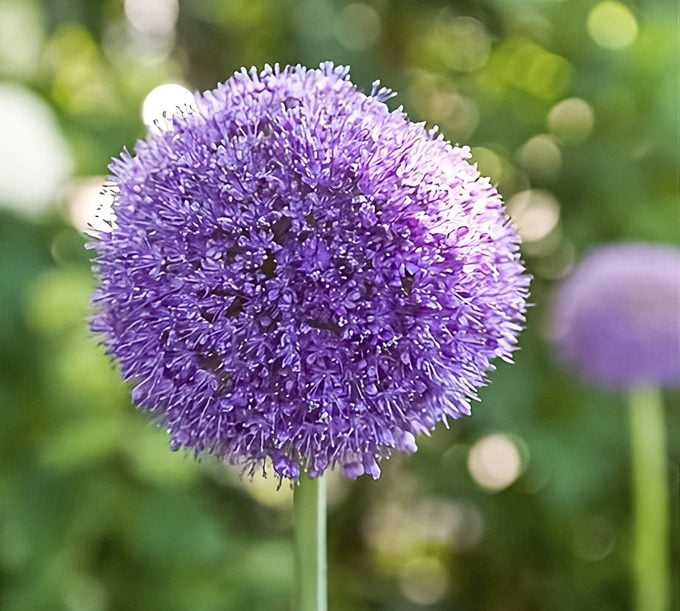
Allium giganteum, Zones 4 to 8
It’s not just the umbel of star-shaped flowers that make the giant allium a showstopper, it’s the sheer size of this bulbous perennial. The deep purple blooms are 5 to 6 inches in diameter, and the stems reach a height of up to 50 inches, giving the summer bloomer a serious wow factor.
Why we love it: The height makes it an ideal filler (or thriller!) at the back of the garden bed.
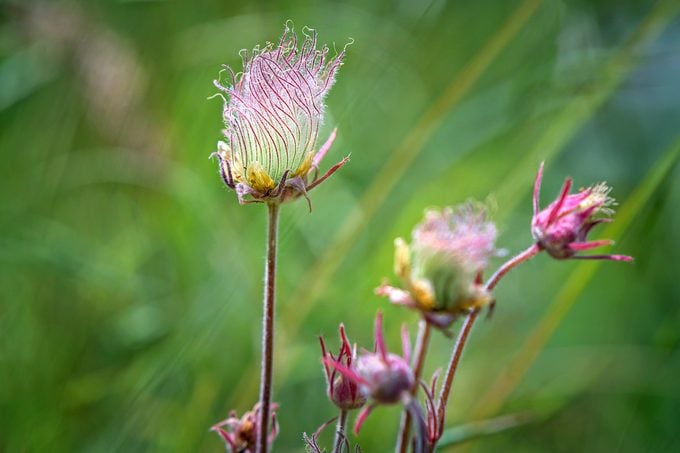
Prairie Smoke
Geum triflorum, Zones 3 to 7
This late-spring bloomer thrives in woodland and wildflower gardens. Clusters of reddish pink, maroon or purple flowers with fused sepals bloom in groups of three. The flowers are followed by fluffy seed heads in shades of silvery pink. In the fall, the semievergreen leaves turn red, orange or purple.
Why we love it: A native North American perennial, prairie smoke is said to have medicinal properties.
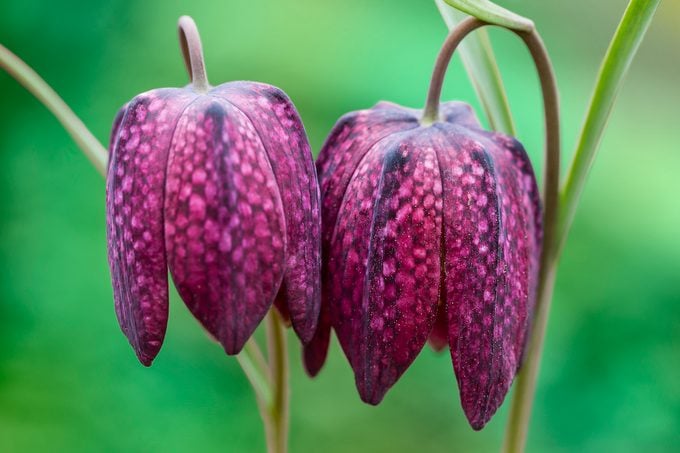
Snake’s Head Fritillary
Fritillaria meleagris, Zones 3 to 8
In April, the low-maintenance bulb produces delicate blossoms on slender stems. The bell-shaped blooms boast a checkered pattern in reddish brown, purple, white and gray shades. The pattern pops when the bulbs are planted in clusters.
Why we love it: This low-growing perennial is deer resistant, making it an excellent spring bloom.
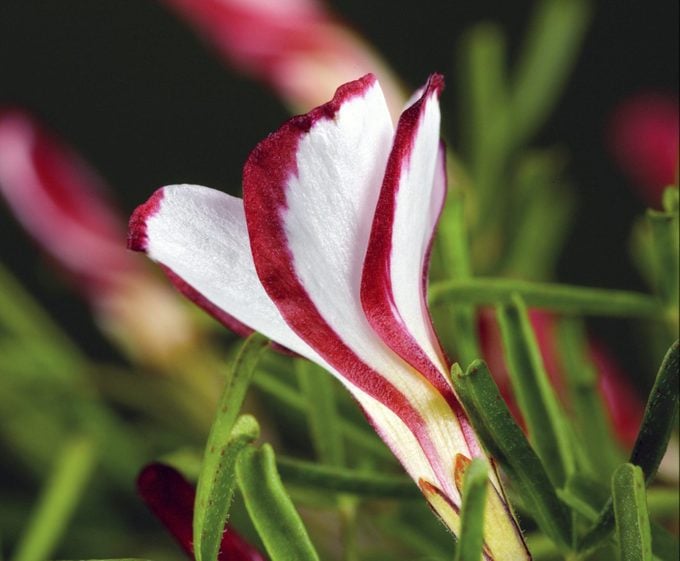
Candy Cane Sorrel
Oxalis versicolor, Zones 7 to 9
The swirls of red and white on the bud of this festive flower mimic the colors of a candy cane. The buds unfurl during sunny weather to reveal white petals rimmed in red. The plant grows well in full sun, and the blooms last from midsummer through fall.
Why we love it: Watch this plant thrive in a container and even as a houseplant.
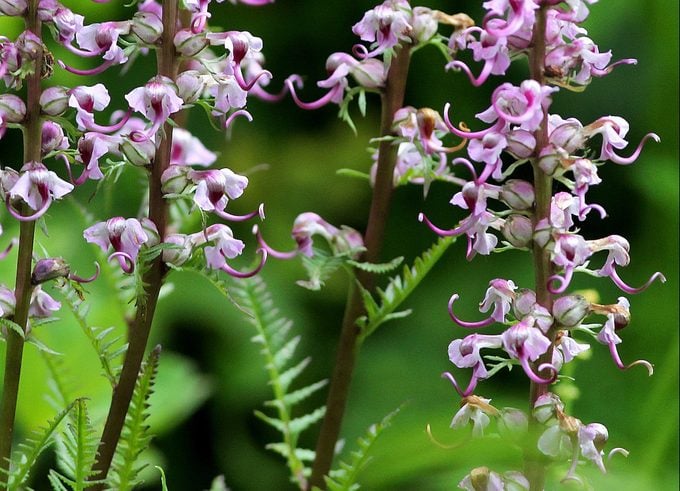
Elephanthead Lousewort
Pedicularis groenlandica, Zones 2 to 7
Purplish leaves appear after the snow melts, and soon after, it produces pinkish purple petals that resemble an elephant’s head. The perennial grows up to 2 feet tall, and although it can be a challenge to grow, the flowers are a great source of pollen for bees.
Why we love it: With a native habitat at high elevations, it’s ideal for northern gardens.
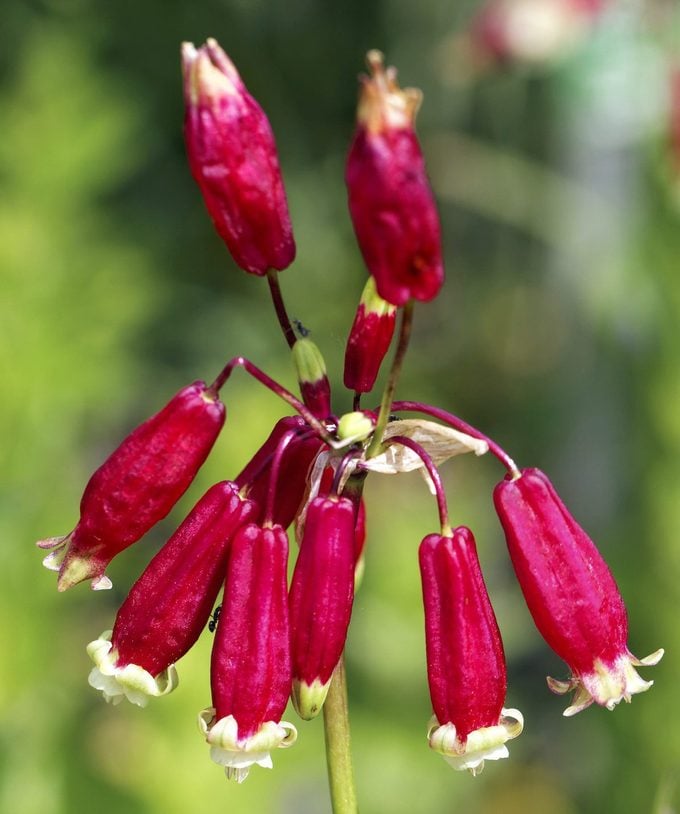
Firecracker Flower
Dichelostemma ida-maia, Zones 7 to 10
Red, pink or green flowers grow in clusters resembling their namesake with fuses attached to the stems. The herbaceous perennial is native to Oregon and California, where it’s abundant in woods and coastal grasslands. It grows up to 3 feet tall and blooms from May through July.
Why we love it: A favorite of hummingbirds and bees, it tolerates poor soil, shade and drought.
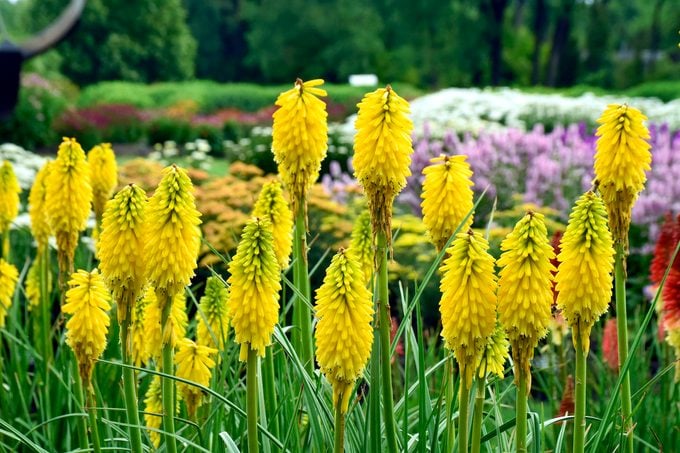
Red Hot Poker
Kniphofia, Zones 5 to 9
Flowering spikes bursting with tubular florets add plenty of drama to any collection of weird plants. The flowers appear in late spring through summer on tall spikes over grassy foliage. Native to southern and eastern Africa, red hot poker thrives in full sun and hot climates.
Why we love it: Different varieties have varying shades of flowers, from cream and yellow to orange and red.
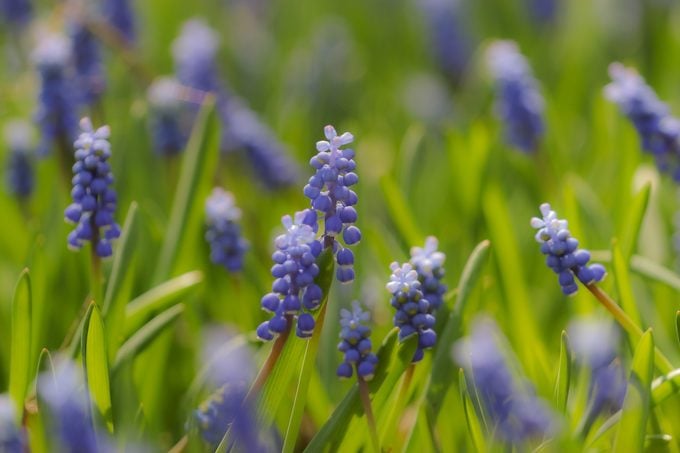
Grape Hyacinth
Muscari paradoxum, Zones 5 to 8
An heirloom classic, grape hyacinth is a perennial favorite. The first flowers appear in March and become spikes bursting with blooms that last through May.
Why we love it: Beautiful and fragrant, it is an early spring favorite of pollinators.
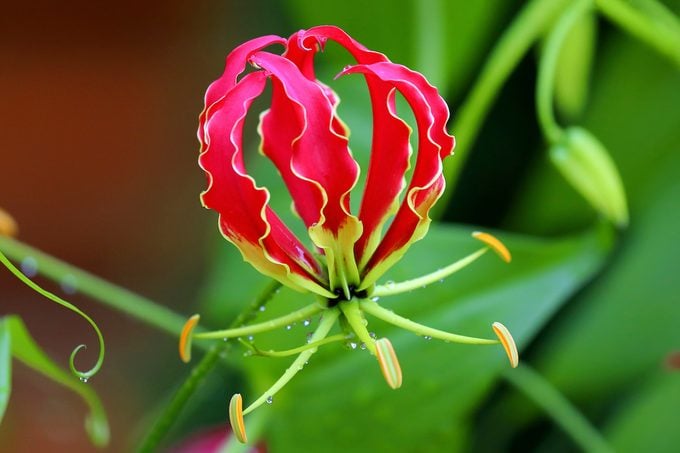
Gloriosa Lily
Gloriosa superba, Zones 8 to 10
The national flower of Zimbabwe, gloriosa lily grows best in temperate and tropical climates, but it can also be grown as a summer bulb in colder areas or in containers where weediness or invasive potential is a concern.
Why we love it: The slender stems and tendrils are great at climbing walls or trellises, reaching lengths of up to 15 feet.
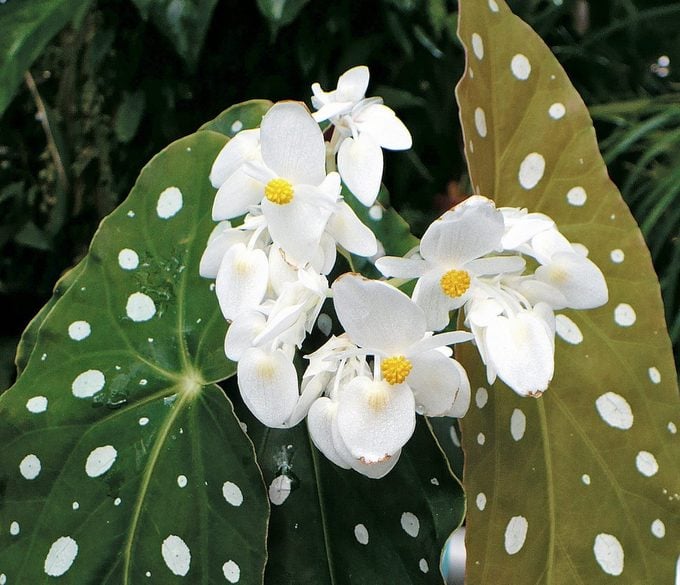
Polka Dot Begonia
Begonia maculata var. wightii, Annual
An impressive height of 3 to 4 feet provides a good view of this begonia’s striking leaves. The elongated-heart shape and ruffled edges make for lovely foliage, but the round, sparkly white spots steal the show.
Why we love it: It’s not just beautiful—it’s a brilliant example of nature’s engineering. It is believed that the spots scatter sunlight within the leaves, helping this begonia adapt to lower light below a forest canopy.
After you read our list of weird plants, check out more fabulous foliage plants for garden pizzazz.
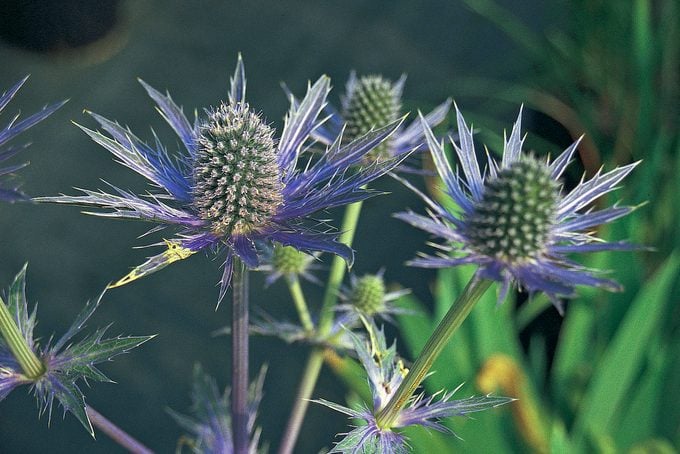
Sea Holly
Eryngium, Zones 5 to 8
Like the coneflower, sea holly is a relatively hardy perennial, sporting a central head ringed with a ruff of “petals.” Except these aren’t petals, but bracts that also sprout out along the stem. And the cone is covered with individual, fully functioning flowers, complete with male and female parts.
Why we love it: Sea holly is the Dr. Jekyll to coneflower’s Mr. Hyde, with its spiky bracts and eerie metallic hue.
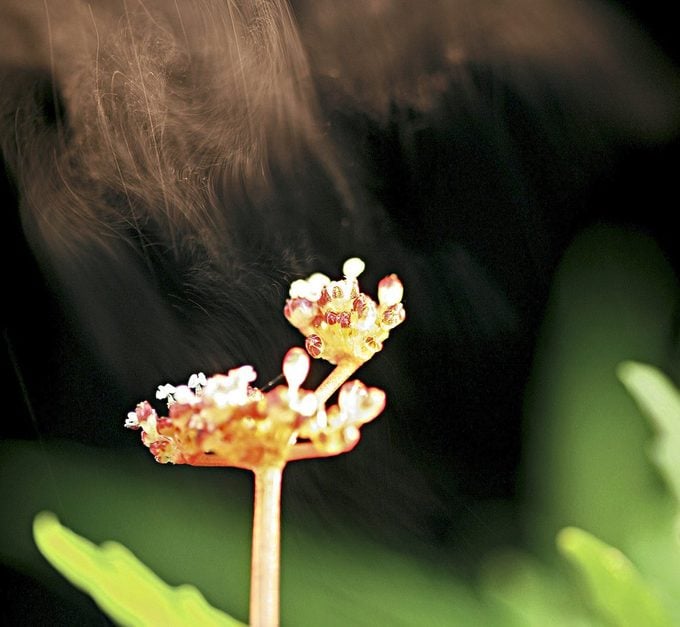
Artillery Plant
Pilea semidentata, Zones 11 to 12
It’s easy to grow this compact perennial indoors near a window or outdoors on a bright patio. With tiny green leaves on multiple stems, the artillery plant offers a pleasing mound of green year-round. Periodically, flat-topped inflorescences appear, tipped with tiny reddish buds. Watch carefully as they plump up.
Why we love it: Mist those fattened buds and wait about 30 seconds. Poof! Whoof! Puffs of pollen begin bursting out as the flowers open, wafting up like smoke from a cannon.
Check out 10 seriously cool succulents that make great houseplants.
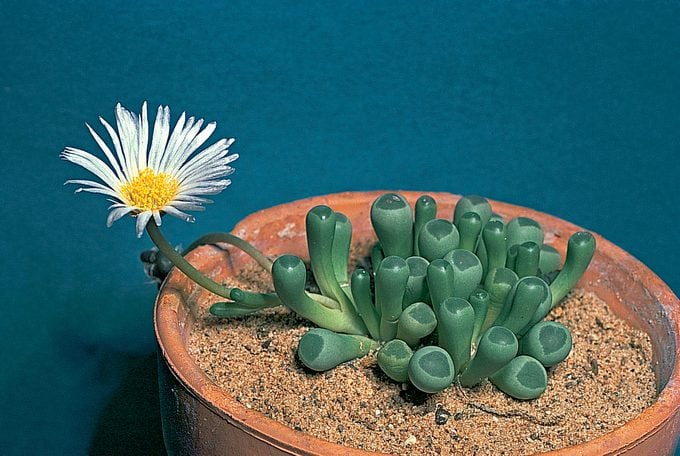
Baby Toes
Fenestraria rhopalophylla, Zones 10 to 12
Like other window-leaved succulents, this one has chubby leaves tipped with triangular patches of translucent pigment. The windows protect these weird plants from burning desert rays while letting in just enough light for photosynthesis. A large white flower rises up from the sand to attract pollinators.
Why we love it: In bright light, baby toes produce a red pigment that gives them further protection from the sun. They take on a pink tinge, almost seeming to blush.
No green thumb? Try the top 10 hard to kill houseplants.
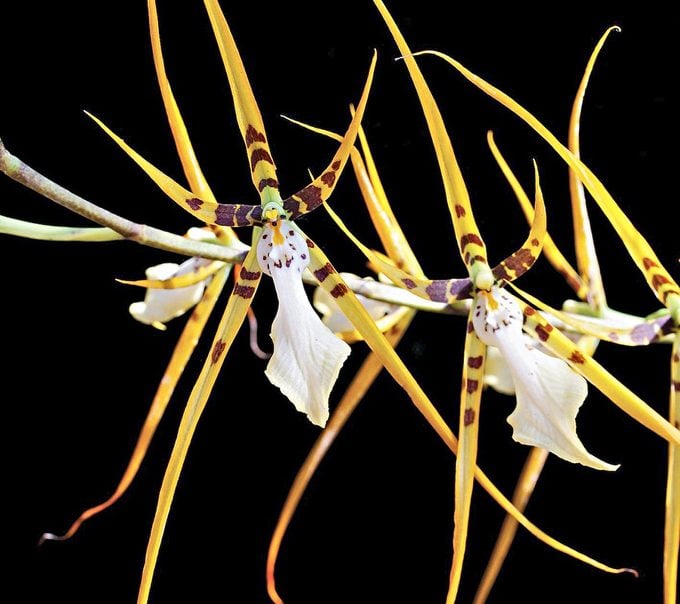
Spider Orchid
Brassia, Zone 12
To me, it looks like a skinny starfish on a stalk. But to wasps, the five banded petals of this tropical orchid resemble big, tasty spiders. While wrestling with the blooms, a wasp becomes covered in pollen, which it will helpfully—though hungrily—take to the next spider orchid.
Why we love it: When it comes to botanical moxie, it’s hard to beat a wasp-wrangling orchid.
Here’s our complete guide to growing orchids.
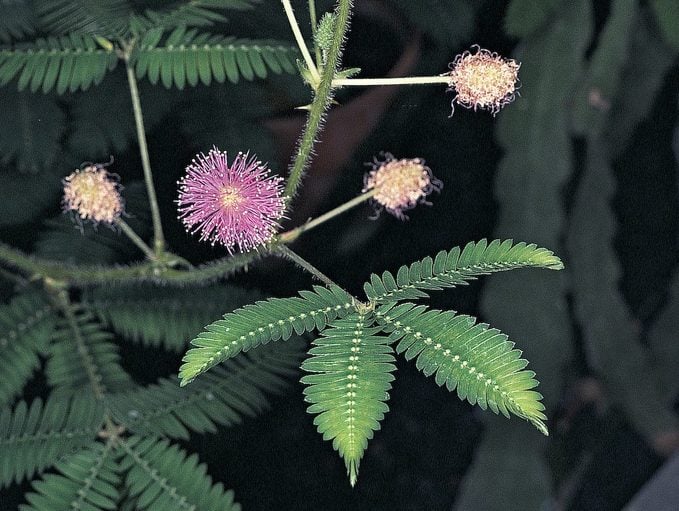
Sensitive Plant
Mimosa pudica
With delicate powder-puff flowers and lacy fernlike leaflets, the sensitive plant seems to earn the name pudica—shy—based on appearance alone. But touch it gently and the leaves fold up, one pair at a time, all the way down the axis.
Why we love it: Within 15 to 20 minutes, the leaflets open back up. It’s hard not to admire such resilience.
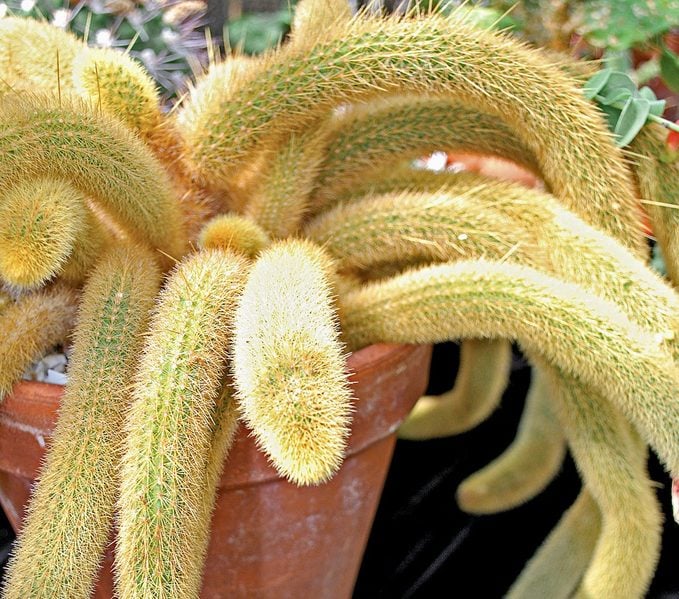
Tarantula Cactus
Cleistocactus winteri, Zones 9 to 11
In its native Bolivia, this cactus creeps along the rocky ground—but in a tall pot, its stems bend to resemble an enormous, hairy spider emerging from its hole. Just when you get super creeped out, pretty salmon-colored flowers bloom.
Why we love it: With regular water and fertilizer, it can grow several inches each year, making this one of our weird plants more fun than horrifying.
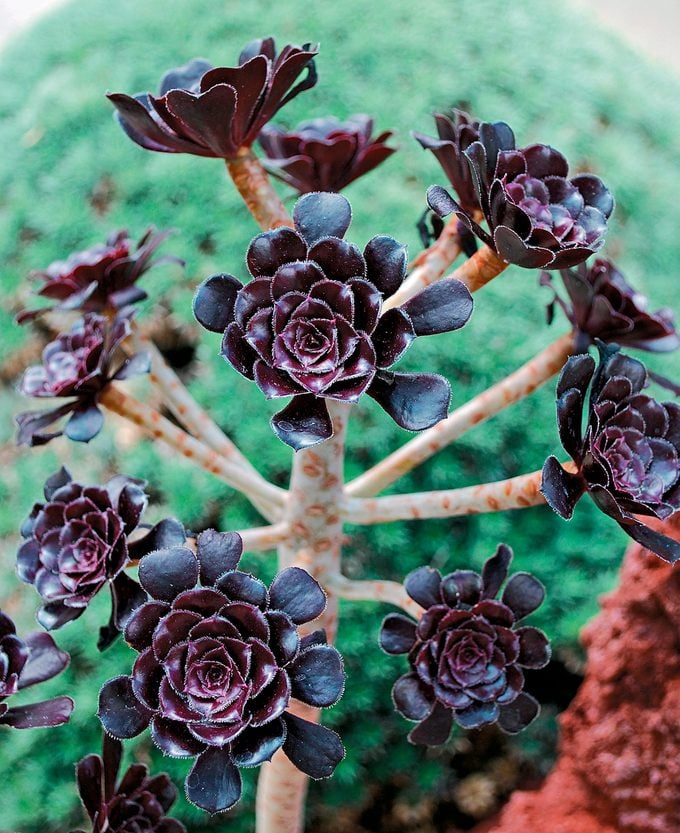
Black Tree Aeonium
Aeonium arboreum ‘Zwartkop’, Zones 9 to 11
Tight rosettes of leaves high atop narrow, gently crooking stalks: Even without the murky coloration, the black tree aeonium smacks of the Gothic. But this perennial craves bright light and warmth, so be prepared to bring it indoors for winter.
Why we love it: Black tree aeonium doesn’t bloom easily, but when it does, the breathtaking contrast of yellow flowers against the dark leaves makes all the effort worthwhile.
Like the dark side? Don’t miss the top 10 black annual and perennial plants.
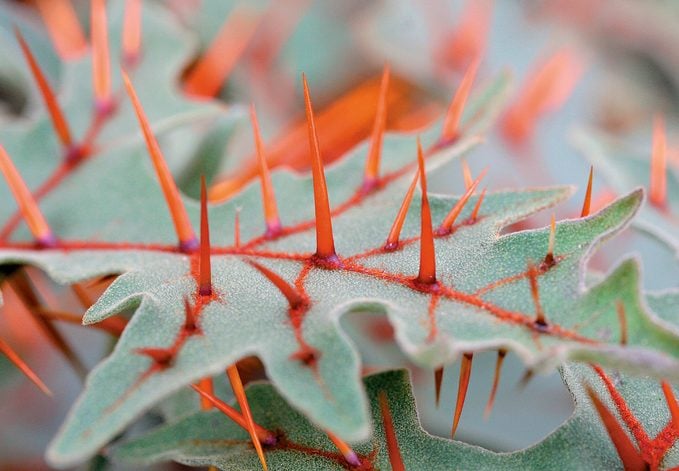
Porcupine Tomato
Solanum pyracanthum, Zones 9 to 11
It starts out innocently enough, a 2-foot-tall plant with elegant lobe-shaped, gray-green leaves. Then—bam!—bright spines start popping up through those leaves. The leaf tops, the undersides, the stems and even the fruit sport these pointy prickles. Note that all parts of these weird plants are poisonous.
Why we love it: Petals usually get all the points for prettiness, making porcupine tomato (also known as devil’s thorn) a lovable, although far from huggable, underdog.
Sources
- Timber Press Bizarre Botanicals by Larry Mellichamp and Paula Gross
- University of Wisconsin-Madison Division of Extension, Prairie Smoke
- North Carolina Cooperative Extension – Giant Allium
- Missouri Botanical Garden – Snake’s Head Fritillary
- North Carolina Cooperative Extension – Gloriosa Lily
- University of Wisconsin-Madison Division of Extension – Gloriosa Lily
- North Carolina Cooperative Extension – Firecracker Flower
- Lady Bird Johnson Wildflower Center – Firecracker Flower
- Missouri Botanical Garden – Red Hot Poker
- Lady Bird Johnson Wildflower Center – Elephanthead Lousewort
Why Trust Us
For nearly 30 years, Birds & Blooms, a Trusted Media Brand, has been inspiring readers to have a lifelong love of birding, gardening and nature. We are the #1 bird and garden magazine in North America and a trusted online resource for over 15 million outdoor enthusiasts annually. Our library of thousands of informative articles and how-tos has been written by trusted journalists and fact-checked by bird and garden experts for accuracy. In addition to our staff of experienced gardeners and bird-watchers, we hire individuals who have years of education and hands-on experience with birding, bird feeding, gardening, butterflies, bugs and more. Learn more about Birds & Blooms, our field editor program, and our submission guidelines.


